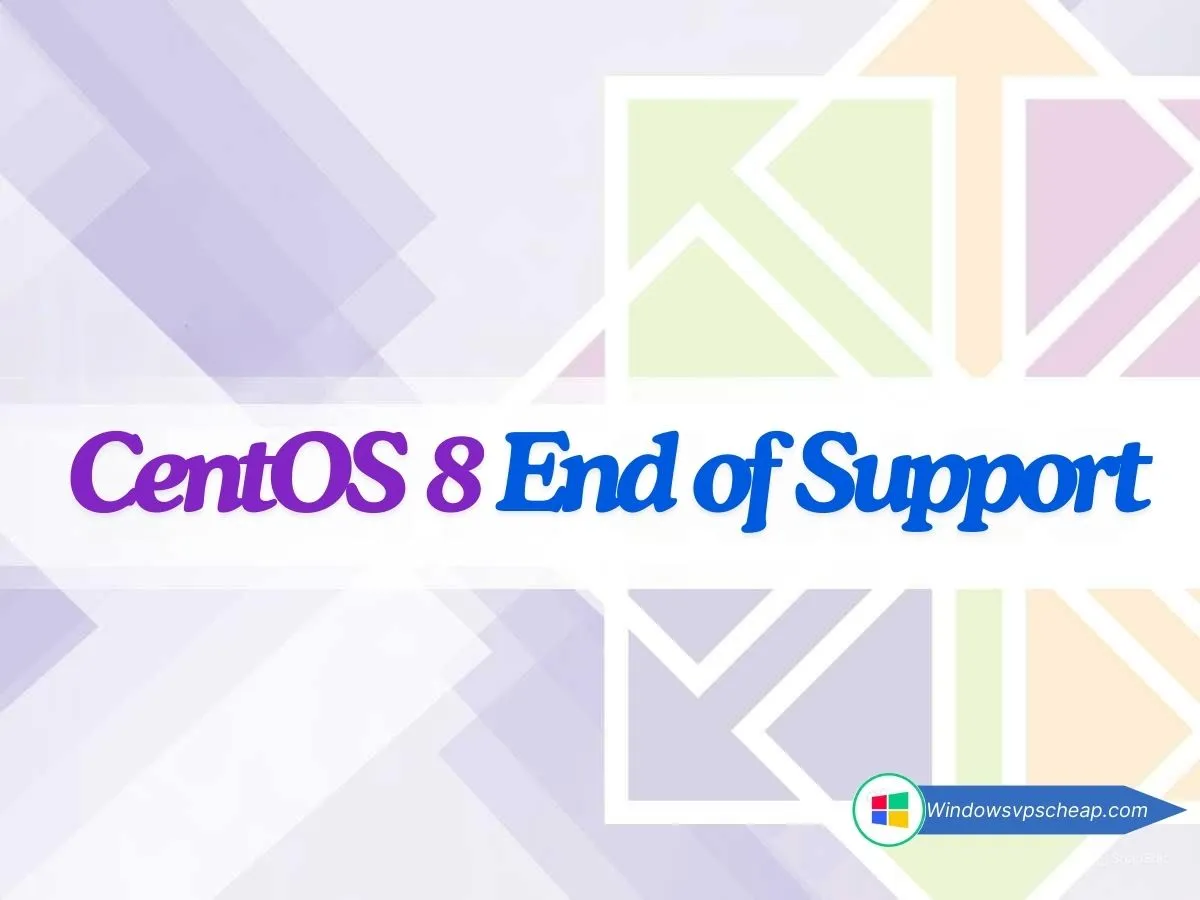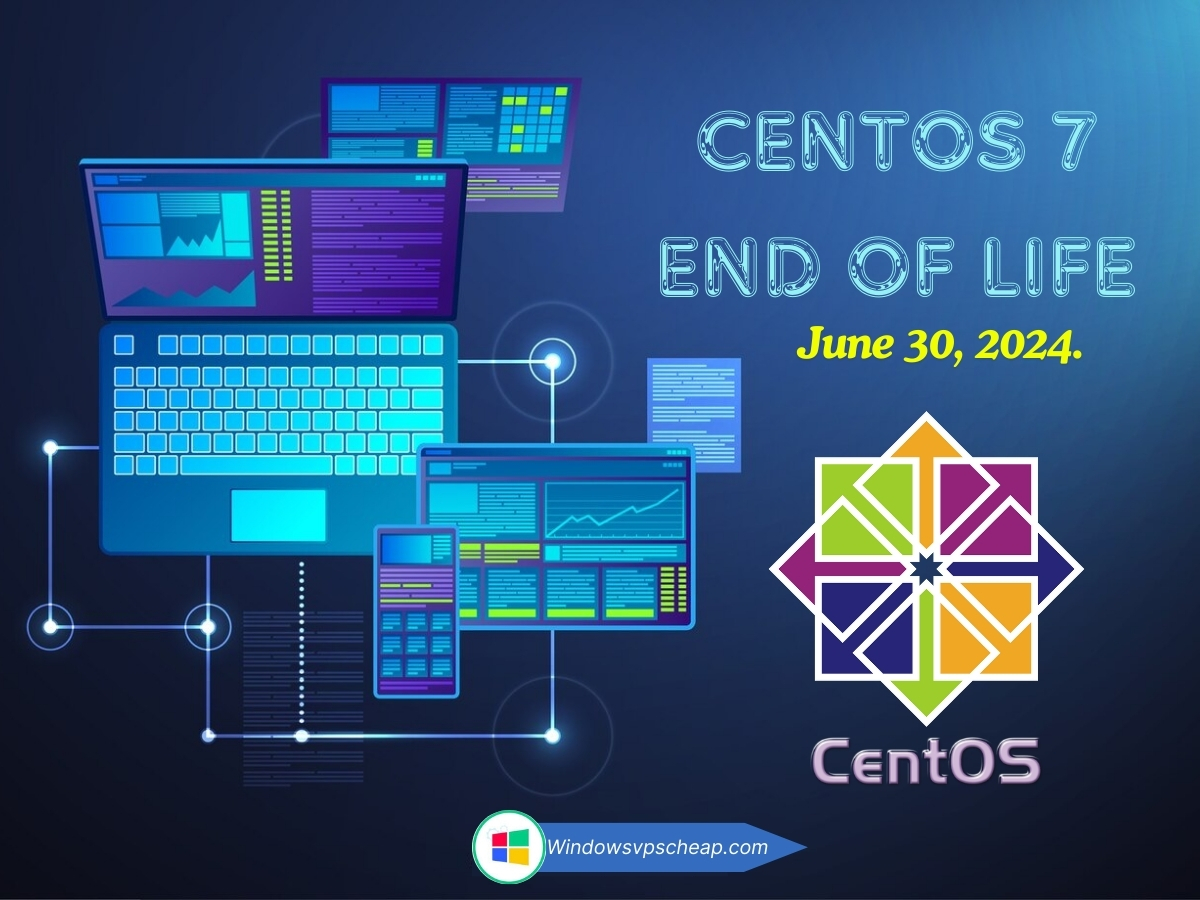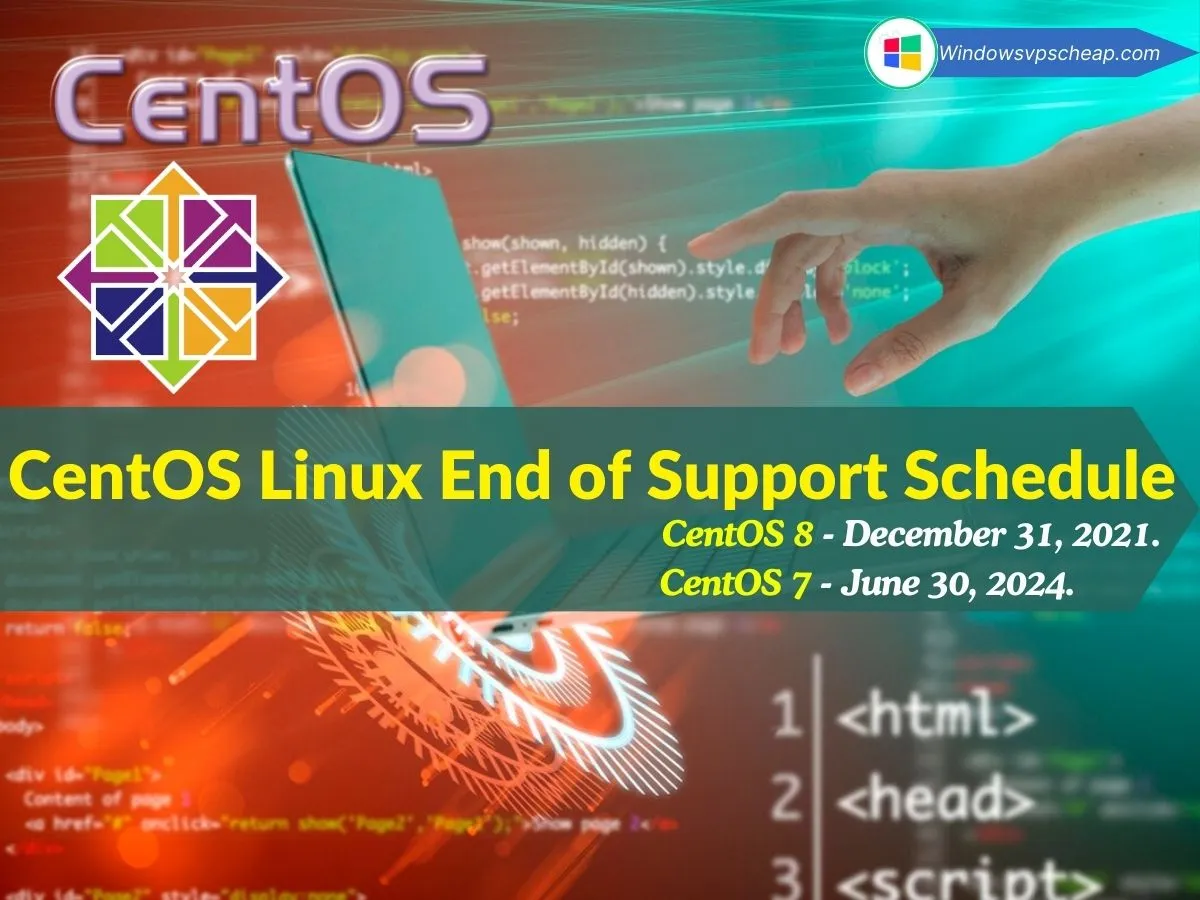The world of Linux distributions is ever-evolving, and CentOS has long been a staple for many organizations, serving as a robust, community-supported alternative to Red Hat Enterprise Linux (RHEL). However, significant changes in the CentOS project have reshaped the landscape, particularly with centos 8 reaching its end-of-life (EOL) in December 2021 and centos 7 scheduled for the same fate on June 30, 2024. These updates have raised concerns among system administrators and businesses worldwide, compelled to reassess their long-term IT strategies.
In this article, we will explore the timelines and implications of the end-of-support schedule for CentOS, focusing on the far-reaching consequences of these decisions, the transition to CentOS Stream, and the broad array of options available for migration. Through this exploration, we aim to provide a comprehensive understanding of what system administrators and businesses can expect as they transition away from CentOS.
CentOS 8 End of Support
The centos 8 project has been pivotal in the journey of Linux distributions, representing a dependable community-supported platform. However, its abrupt termination in December 2021, less than a year after its initial release, staggered many users. Despite a planned life cycle that aimed toward 2025, the early EOL announcement drastically altered the course for many organizations, urging them to seek alternatives more quickly than anticipated.

Release Date and Initial Support Period
CentOS 8 was officially released on September 24, 2019, heralding a new chapter in enterprise Linux. Designed as a downstream build of RHEL 8, it presented a comprehensive set of packages, ensuring compatibility and leveraging the robust infrastructure of its upstream counterpart. For many businesses, the initial eight months of its life cycle offered a host of enhancements and a wealth of potential. It transitioned smoothly into the support period, where updates and community backing were plentiful. This initial support period boasted generous features such as improved security modules, enhanced hardware support, and significant advancements in performance metrics.
However, in December 2020, Red Hat dropped the bombshell announcement that CentOS 8 would no longer be receiving updates past December 31, 2021. This drain on community support not only shortchanged expected updates but also impacted the trust many had placed in the CentOS project. The accelerated EOL transformed the trajectory for countless companies, leading to heightened uncertainty about software deployments built around CentOS 8.
Transition to CentOS Stream
In light of the dramatic changes surrounding CentOS 8, one of the most significant shifts was the transition to CentOS Stream. This new model positions CentOS Stream as the direct development branch of RHEL. Rather than remaining a stable release downstream from RHEL, CentOS Stream maintains a rolling update mechanism that provides the latest features and improvements ahead of the next official RHEL release.
For some, this transition could be seen as a double-edged sword. On one hand, CentOS Stream allows users to access the cutting-edge features earlier and engage directly with the development process, enabling them to provide feedback and collaborate on improvements. However, on the other hand, it diverges from the traditional, stable release model that many organizations had come to trust. The prospect of dealing with potential instability and bugs might discourage some users from adopting this new path, forcing them to consider alternative solutions.
For organizations that favor stability over innovation, this shift has profound implications. Migration away from CentOS 8 to CentOS Stream means redefining the support structure and risk management. Businesses now need to navigate the trade-offs of this new direction while maintaining operational integrity and security.
Key Features and Changes in CentOS 8
CentOS 8 brought with it several notable features and changes, which, while exciting, were overshadowed by the abrupt EOL announcement. Some of the key enhancements included a kernel update from version 3.10.0 to 4.18.0, marking a significant advancement in performance and hardware support. Moreover, the introduction of modularity in CentOS 8 replaced traditional software collections, permitting users to choose between different versions of packages while only installing one at a time. While this improvement aimed to streamline software management, it also created challenges, as users familiar with installing multiple versions had to adjust their processes.
Another notable change was the transition of the package management system from YUM to DNF, leading to better dependency management and enhanced performance. Furthermore, the web-based management interface called Cockpit was included by default, providing a more user-friendly system administration experience for those less familiar with command-line interfaces. However, the increased minimum RAM requirement from 1GB to 1.5GB posed challenges for users with legacy systems, limited hardware resources, or embedded environments.
Despite these notable changes, the early EOL announcement meant that many organizations would not have the opportunity to leverage these new features fully. In a way, CentOS 8’s life cycle felt like a new book abruptly cut off before the climax, leaving users stranded without resolution and often forcing them to scramble for alternatives that might be more reliable.
CentOS 7 End of Support
As centos 7 dominates today’s Linux landscape, its impending end-of-life date looms large on the horizon on June 30, 2024. This release, which celebrated its inception in July 2014, has cemented itself as a trusted platform for organizations across diverse sectors. With a full lifecycle that encompasses various phases of support, centos 7 has delivered comprehensive, critical updates to users for a decade. However, as that full lifecycle approaches its closure, organizations must confront the reality of moving away from a platform that has served them well.

Full Lifecycle and Release Dates
CentOS 7’s journey began on July 7, 2014. This release came to life amid mounting anticipation aimed at providing a stable and free counterpart to RHEL 7. With ten years of promised support, many organizations quickly adopted centos 7 as their primary environment, benefiting from an ecosystem filled with both community-driven and enterprise backing.
The support life cycle can be broken down into several critical phases:
- General Availability (GA) Phase: This period was characterized by active development, ongoing minor releases, and a steadfast focus on supporting users with robust enhancements. Lasting until August 2020, this phase positioned centos 7 to meet the diverse needs of organizations in dynamic environments.
- Maintenance Phase 1: Following the GA phase, urgent patches for critical bugs and security vulnerabilities were released, lasting from August 2020 until the eventual EOL in June 2024. During this timeframe, more targeted updates began to phase out non-critical updates, ensuring that stability remained paramount.
- Maintenance Phase 2: The final phase commencing in August 2020 allowed for only critical vulnerabilities to be patched as per the decisions made by centos maintainers and Red Hat. As centos 7 approaches its twilight, users are reminded of the importance of remaining vigilant as it prepares to sunset.
This structured approach to lifecycle support stands in stark contrast to centos 8, a release that has showcased how abrupt strategic pivots led to operational upheaval among its users. Understanding this context helps highlight the reliability of centos 7, prolonging the necessity of planning to transition away from it before the imminent EOL.
Community Support and Maintenance Phases
The centos linux community has forged a legacy of resilience grounded in active engagement and collaboration among users. With the support of organizations like Red Hat, centos 7 has benefitted from communities of contributors, testers, and users committed to troubleshooting and crafting innovative solutions. This spirit of community is particularly evident in each of the maintenance phases.
During the GA phase, the community’s role highlighted the significance of user involvement. As bugs and improvements evolved regularly, both users and developers collaborated closely, leading to a richer ecosystem with sound architecture. The result was an environment where users felt invested in the CentOS project, supported by a myriad of available resources.
As we transitioned to Maintenance Phase 1, community support became a lifeline for many organizations facing the onset of critical security vulnerabilities. Organizations relied on active forums and discussion groups to share best practices, tips, and troubleshooting techniques. Despite the shift that saw Red Hat tighten its grip on community updates, the commitment of users to pool resources and share knowledge proved invaluable during challenging times.
By maintaining open channels for communication between users, developers, and maintainers, centos 7 solidified its foundation in the ethos of open-source software. This culture remains critical as system administrators begin contemplating their options for transitioning after June 2024, further reinforcing the necessity of engaging in community forums and discussions to prepare for future migrations efficiently.
Security Updates Until EOL
As centos 7 approaches its end of life on June 30, 2024, organizations must remain vigilant regarding their security posture. This final phase of support signifies that only critical updates will be addressed, leaving vulnerabilities exposed once the EOL arrives. Without regular security updates, systems faced with burgeoning threats would have no recourse, making immediate migration essential.
For organizations still reliant on centos 7, the impending lack of support should serve as a wake-up call to reassess their dependency on this distribution. As competing distributions emerge, the integrous security that once characterized the centos environment is becoming increasingly fragile. The risk of attacks or system compromises rises dramatically after EOL, leaving organizations vulnerable to exploitations that could potentially devastate their reputation and business operations.
To minimize risk, organizations must prioritize migration plans well before the deadline. Evaluating alternative platforms, adopting post-EOL strategies, and ensuring testing procedures are paramount to mitigating vulnerabilities tied to the absence of security updates. Relying solely on centos 7 until the final minute is akin to walking on thin ice; one wrong step can lead to dire consequences.
Transitioning from CentOS 7 to Alternative Options
As centos 7 inches toward its end of life, organizations must prepare for a transition away from this trusted platform. Various viable options exist. One popular path involves migrating to Red Hat Enterprise Linux (RHEL). This transition preserves compatibility with existing applications while granting access to the extensive resources and tools provided by Red Hat. Organizations with the budget can ensure a seamless transition while preparing for ongoing operational support.
Another feasible alternative is transitioning to community-driven distributions, such as AlmaLinux or Rocky Linux, which have quickly emerged as leading replacements for CentOS Linux. Both options carry the promise of maintaining strong connections with the CentOS Linux ecosystem while delivering ongoing community support. Organizations considering a migration process should assess their unique needs and weigh the advantages and disadvantages of these alternatives carefully.
Beyond these RHEL-based options, enterprises can also explore broader distributions that promise long-term support, such as Ubuntu LTS or Debian. While these alternatives may require migrating beyond the familiar RHEL architecture, they offer distinct advantages that appeal to various user groups. Organizations should base their decision on business objectives and resource availability, facilitating a process that engenders confidence and supports operational longevity.
Steering clear of undue haste, organizations preparing for the transition away from centos 7 should start examining various options and ultimately charting a migration strategy that aligns with both short-term and long-term goals.
Importance of Planning Migration Before EOL
The arrival of EOL should catalyze proactive decision-making for organizations reliant on centos 7. Planning a migration strategy before the deadline emphasizes the urgent need to avoid potential disruptions in operations that could wreak havoc on business continuity. Comprehensive planning ensures organizations never find themselves scrambling at the last minute, fostering a more thoughtful approach that maximizes the likelihood of success.
One critical aspect organizations must consider is assessing their current infrastructure. Each environment has unique complexities, dependencies, and compatibility issues that may arise during the migration process. By identifying these concerns earlier in the planning phase, organizations can strategically address them, minimizing disruptions while ensuring a smooth transition.
Moreover, organizations should prioritize testing new environments in isolated environments to validate compatibility and ease of migration. Identifying potential roadblocks and addressing them ahead of time builds confidence in ongoing operations. The phased approach also allows system administrators to manage workloads while providing necessary training to staff before deploying the new systems at scale.
Ultimately, proactively planning migration is paramount for organizations aiming to maintain security, performance, and operational stability. The nuanced considerations tied to transitioning from centos 7 demand careful, measured strategies that decisively govern pathways to long-term viability.
Post-End of Life Considerations
As the sun sets on centos 7’s lifecycle, organizations are reminded of the importance of proactive strategies and timely actions. Ensuring ongoing security after the end of support on June 30, 2024, remains paramount for organizations still relying on this venerable platform.
Long-Term Support Options Available
With the passage of time and the confirmation of centos 7’s impending EOL, organizations are presented with several long-term support options to maintain security and service reliability. Primarily, migrating to Red Hat Enterprise Linux (RHEL) continues to be a top choice for many enterprises. RHEL’s established status within the industry prompts instant access to an extensive ecosystem of support services, patches, updates, and security fixes. Leveraging Red Hat’s resources facilitates a seamless transition while maintaining the core familiarity established during centos 7’s tenure.
Another compelling alternative lies in using community-supported projects like AlmaLinux or Rocky Linux. Billed as true successors to CentOS Linux, these distributions provide users with a free, RHEL-compatible platform built around community governance. Fortified by the communities developed around them, they promise ongoing support and engagement, cultivating a vibrant alternative to traditional commercial offerings.
Lastly, organizations may consider other well-regarded distributions like Debian or Ubuntu LTS. While they may necessitate a more notable departure from RHEL architecture, thorough evaluations can reveal whether these distributions align with broader organizational goals. Organizations can capitalize on capabilities tailored to their unique needs through these choices.
Evaluating Alternative Linux Distributions
Evaluating potential alternatives to centos 7 remains critical post-EOL. A comprehensive assessment should center on critical factors, such as security, support, compatibility, and overall long-term viability. Businesses need to ensure whatever distribution is chosen maintains a rich resource ecosystem characterized by systematic security patches and strong community support.
When assessing options, organizations should begin by investigating ongoing security practices within the distribution. Regular security updates, community engagement, and transparent governance structures ultimately dictate a distribution’s reliability and overall effectiveness. If pressures from prospective exploits mount following EOL, organizations might find themselves disregarding significant gaps in their security infrastructure.
Furthermore, professional technical support is critical for organizations projecting continued growth. Ensuring that a distribution provides access to comprehensive support resources prepares organizations for the inherent challenges associated with migration and transition. Ideally, the chosen distribution should offer well-documented guides and sufficiently educated contributors available to resolve issues efficiently.
In sum, organizations must meticulously evaluate alternative Linux distributions by scrutinizing their core security practices, support structures, compatibility with existing workflows, and long-term viability as they prepare for life after centos 7.
Conclusion
The end of support for CentOS 8 in December 2021 and CentOS 7 on June 30, 2024 have created significant challenges for organizations and businesses that rely on these versions. This requires organizations to quickly come up with migration plans and choose appropriate alternatives.
Alternatives such as AlmaLinux, Rocky Linux, CentOS Stream, and Red Hat Enterprise Linux (RHEL) are viable solutions that offer stability and security. Choosing the right distribution is not only based on the needs and resources of each organization, but also involves anticipating future challenges and opportunities. These versions are currently available on VPS USA.
Wish you a productive working day, and if you have any questions or requests regarding the VPS, please contact WindowsVPSCheap Customer Support for guidance.
CATEGORY:Knowledge

